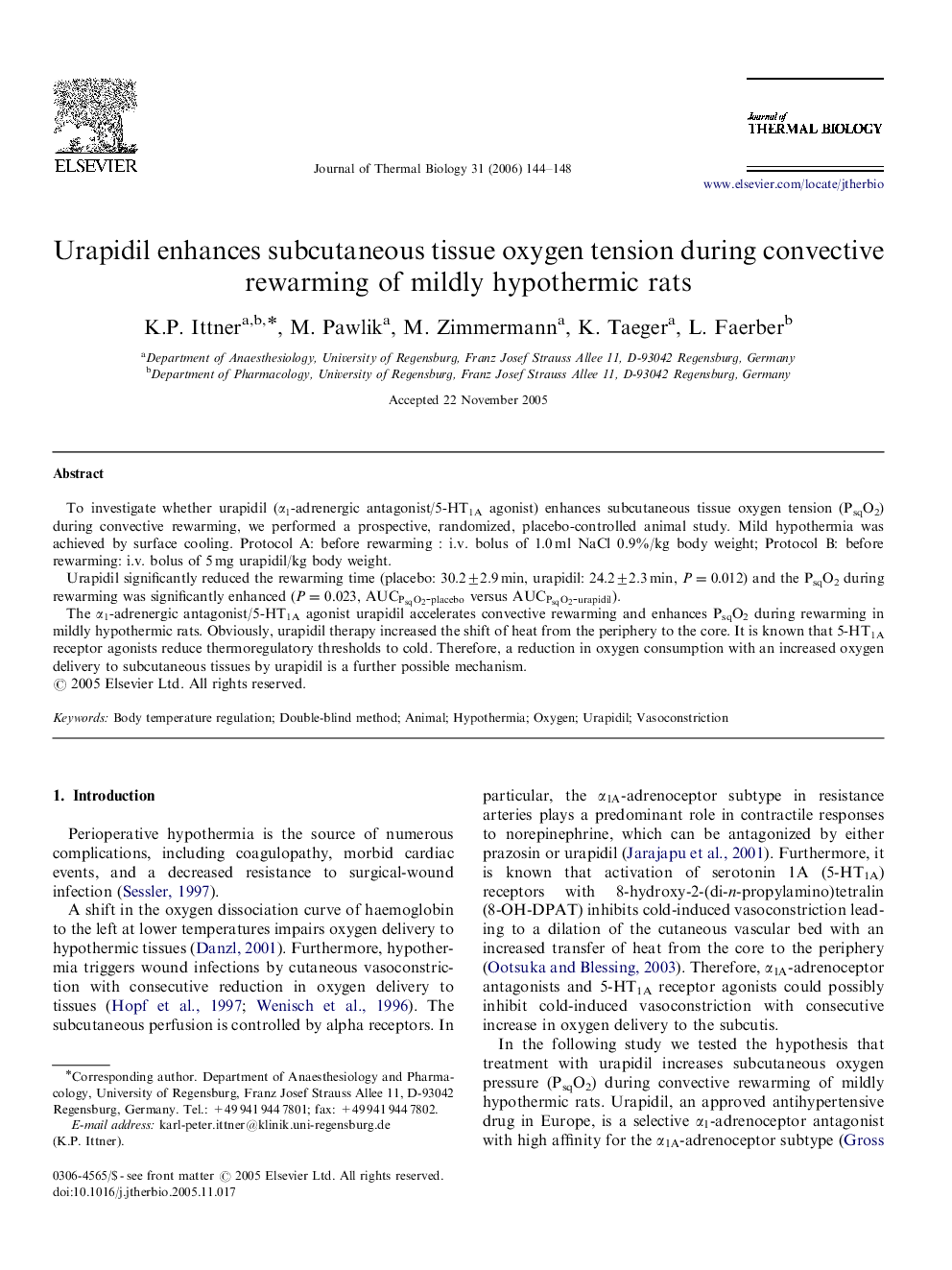| Article ID | Journal | Published Year | Pages | File Type |
|---|---|---|---|---|
| 2843773 | Journal of Thermal Biology | 2006 | 5 Pages |
To investigate whether urapidil (α1-adrenergic antagonist/5-HT1A agonist) enhances subcutaneous tissue oxygen tension (PsqO2) during convective rewarming, we performed a prospective, randomized, placebo-controlled animal study. Mild hypothermia was achieved by surface cooling. Protocol A: before rewarming : i.v. bolus of 1.0 ml NaCl 0.9%/kg body weight; Protocol B: before rewarming: i.v. bolus of 5 mg urapidil/kg body weight.Urapidil significantly reduced the rewarming time (placebo: 30.2±2.9 min, urapidil: 24.2±2.3 min, P=0.012P=0.012) and the PsqO2 during rewarming was significantly enhanced (P=0.023P=0.023, AUCPsqO2‐placeboAUCPsqO2‐placebo versus AUCPsqO2‐urapidilAUCPsqO2‐urapidil).The α1-adrenergic antagonist/5-HT1A agonist urapidil accelerates convective rewarming and enhances PsqO2 during rewarming in mildly hypothermic rats. Obviously, urapidil therapy increased the shift of heat from the periphery to the core. It is known that 5-HT1A receptor agonists reduce thermoregulatory thresholds to cold. Therefore, a reduction in oxygen consumption with an increased oxygen delivery to subcutaneous tissues by urapidil is a further possible mechanism.
